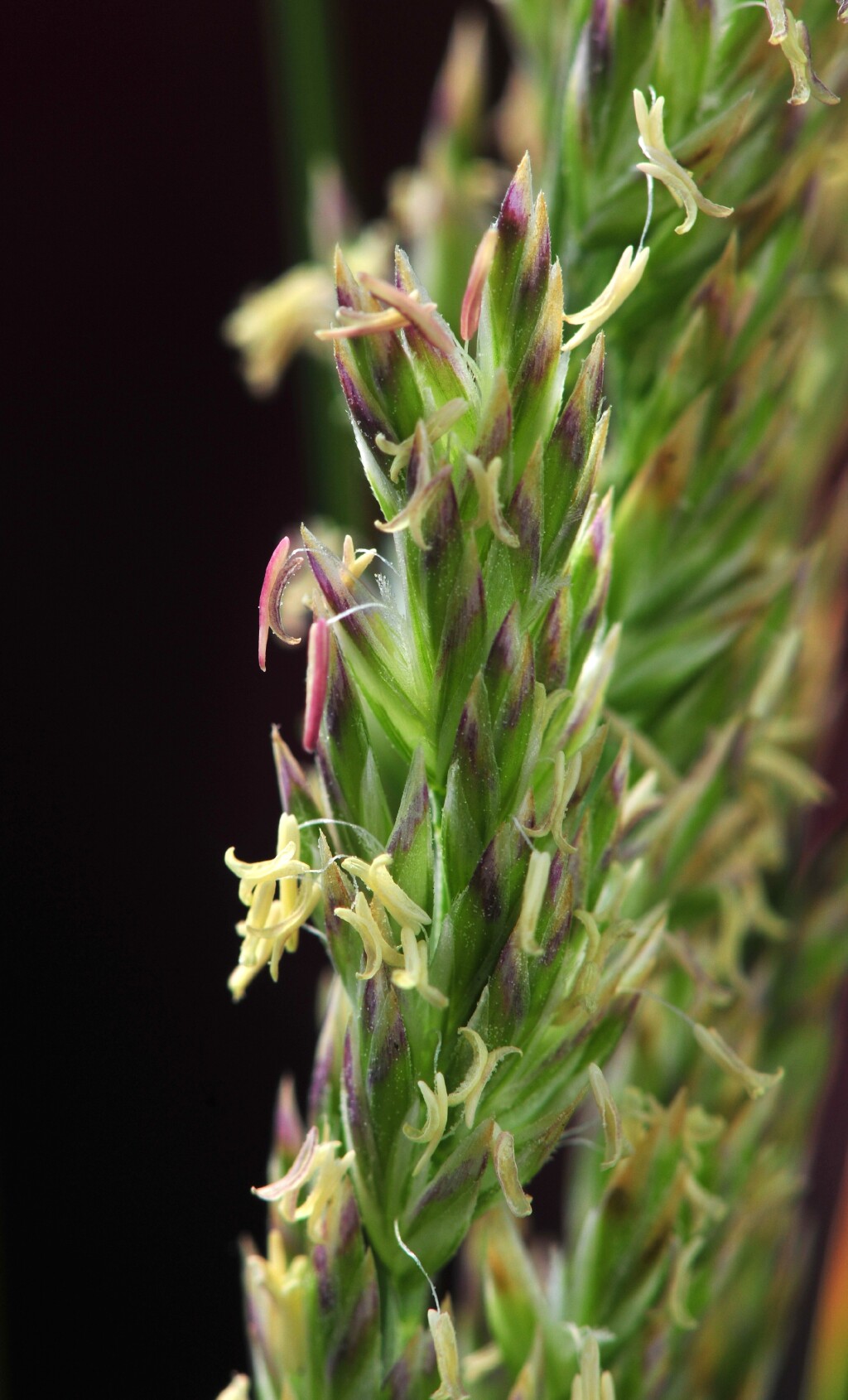Poa poiformis
(Labill.) Druce Blue Tussock-grassPerennial, to c. 1 m high. Leaves usually stiffly erect and sharp-tipped, sometimes exceeding the inflorescence, often somewhat glaucous; sheath pale, or rarely purplish, glabrous, smooth to minutely scabrous; blade usually closely inrolled and 0.5–1.5 mm diam. less often loosely inrolled or folded, to 2 mm wide when flattened, entirely smooth to slightly finely scabrous on the outer surface, scabrous to shortly pubescent on the inner surface; ligule truncate, firmly membranous, c. 0.5 mm long. Inflorescence usually a narrow, rather dense panicle, to c. 30 cm long and occasionally looser and the lower branches widely spreading. Spikelets 2–7-flowered, 5–8 mm long, green or straw-coloured; glumes 3-nerved (or the lower occasionally 1-nerved), the upper slightly longer than lower and equal to or slightly longer than the lowest lemma; lemma 5-nerved, rather narrow 3–6 mm long, conspicuously hairy along keel and lateral nerves below midway, occasionally with some hairs on the lower internerves, very rarely almost glabrous; web usually well-developed. Blue Tussock-grass.
GleP, Brid, VVP, GipP, OtP, WaP, EGL, WPro, HNF, OtR, Strz, VAlp.
2 varieties in Victoria.
Walsh, N.G. (1994). Poaceae. In: Walsh, N.G.; Entwisle, T.J., Flora of Victoria Vol. 2, Ferns and Allied Plants, Conifers and Monocotyledons, pp. 356–627. Inkata Press, Melbourne.
 Spinning
Spinning



